Hydrangeas play a central role in the late summer garden. Those woody shrubs that look bare in early spring leaf out and produce fabulous blooms from mid summer through the fall. And, as temperatures cool and blooms fade, they take on a whole new muted color palette. Perfect for cut flower arrangements or for simply admiring in the garden, hydrangeas are a favorite of many. In order for hydrangeas to thrive, it is important to know your growing site, and to select the right hydrangea for the right condition. Here are the most common types:
Hydrangea anomala petiolaris (Climbing Hydrangea): A vigorous, woody, climbing vine that attaches to structures with root-like holdfasts. This vine is slow to establish, but once it does creates a wall of foliage and white, fragrant, lacy flowers. It works well in locations ranging from full shade to full sun.
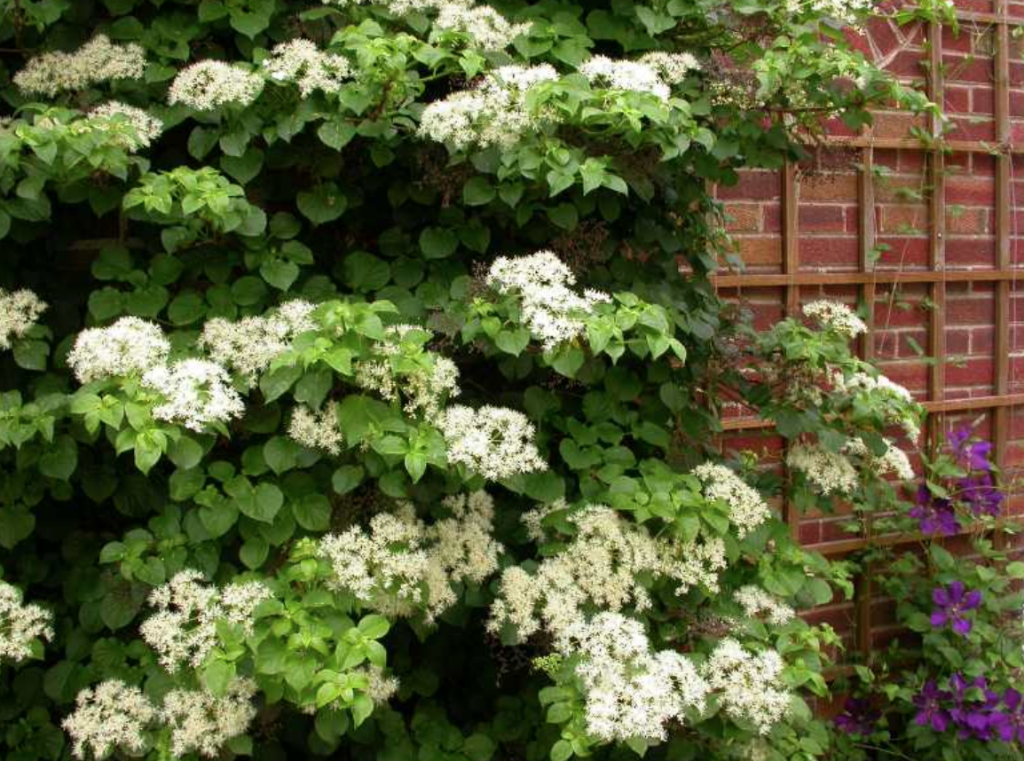
Hydrangea anomala petiolaris
Hydrangea arborescens (Smooth Hydrangea): This native shrub is a great option for the partially shaded or woodland garden. Large white blooms are borne above fleshy stems. Prune the stems to the ground each year in late winter (before the leaves emerge) since the flowers form on new growth. “Annabelle” is a choice variety.
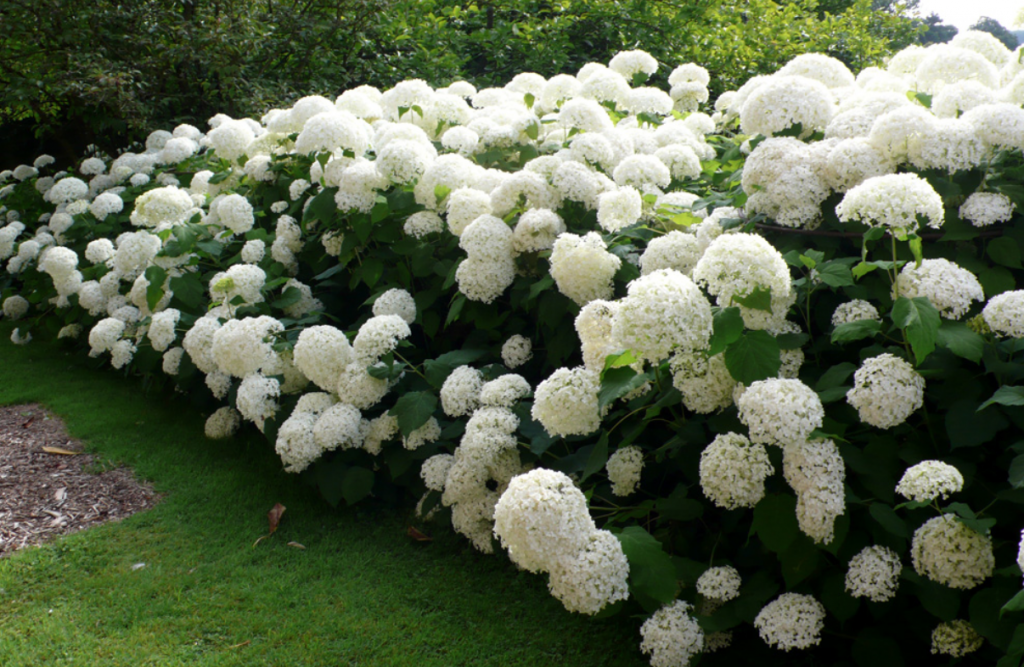
Hydrangea arborescens ‘Annabelle’
Hydrangea macrophylla (Bigleaf Hydrangea): Further divided into “mophead” or “lace cap” types, this is the hydrangea of Cape Cod coastal gardens. With fabulous color ranging from bright blue to bright pink (based on soil acidity), this is the species most people associate with hydrangea. These shrubs do not love blazing hot conditions, preferring afternoon shade or cool coastal breezes. Avoid watering them from above (you’ll get dark splotches on the leaves). ‘Endless Summer’ is a popular reblooming variety.
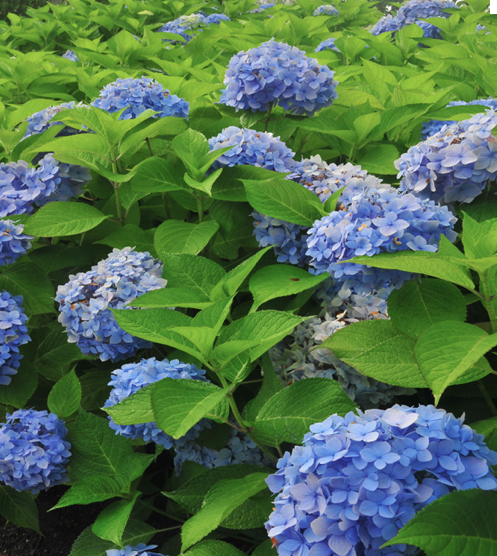
Hydrangea macrophylla ‘Endless Summer’
Hydrangea paniculata (Panicle Hydrangea): With cone shaped blooms, and a more upright form, this is the hydrangea choice for full sun. Blooms range from chartreuse green, to white, to pink. ‘Quick fire’ is a great variety with showy red stems.
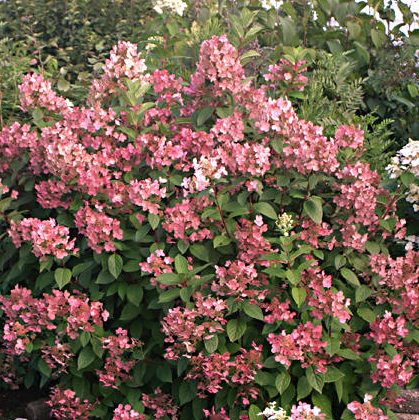
Hydrangea paniculata ‘Quickfire’
Hydrangea quercifolia (Oakleaf Hydrangea): Named because of the shape of its leaf, which resembles an Oak tree leaf. This native hydrangea adds great texture to the shade garden. Its foliage turns lovely fall colors, and its cone shaped bloom is loose and perfect for a woodland or informal area. ‘Alice’ and ‘Sikes Dwarf’ are two great varieties.
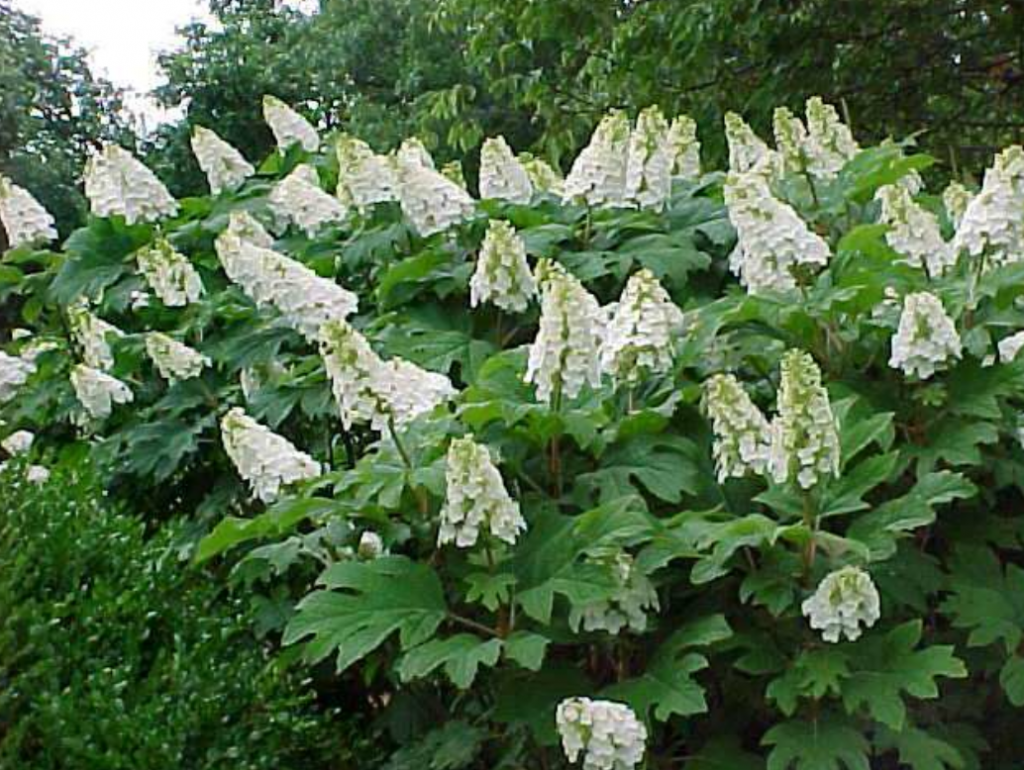
Hydrangea quercifolia ‘Alice’
There are more species and subspecies of hydrangea, but these are the general types you will see at the nursery. With options that work from full shade to full sun, this family of plant can work in most gardens.



